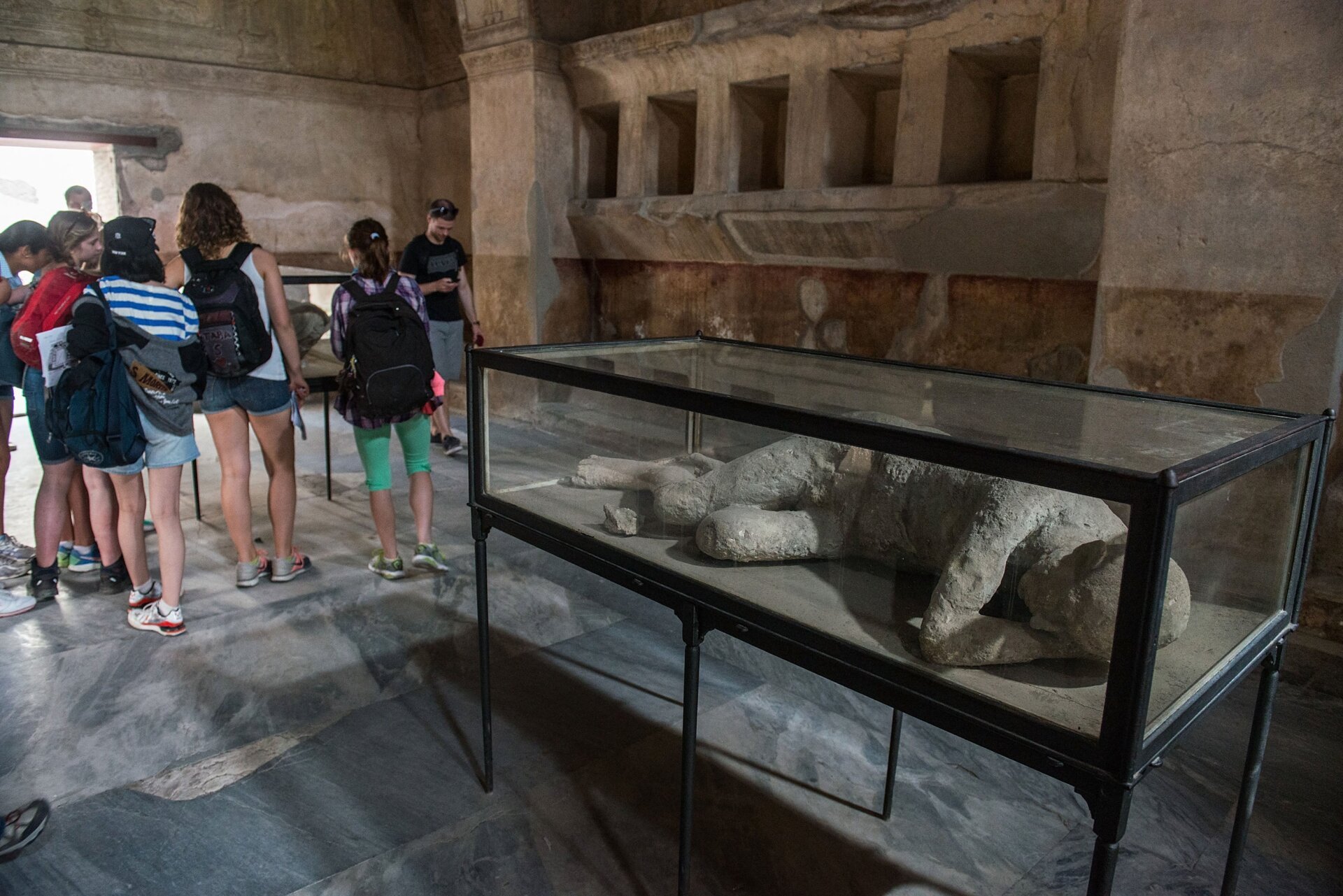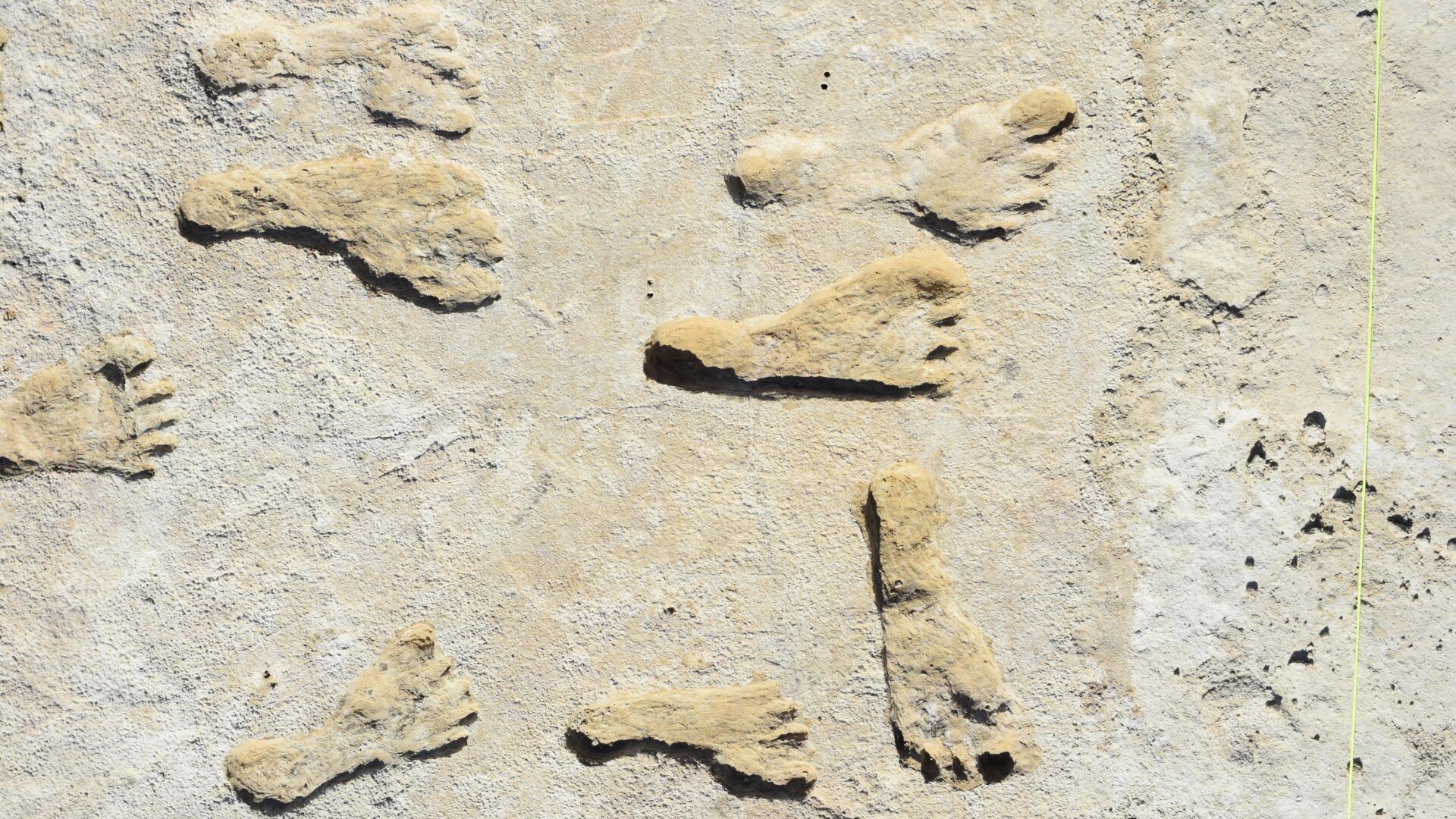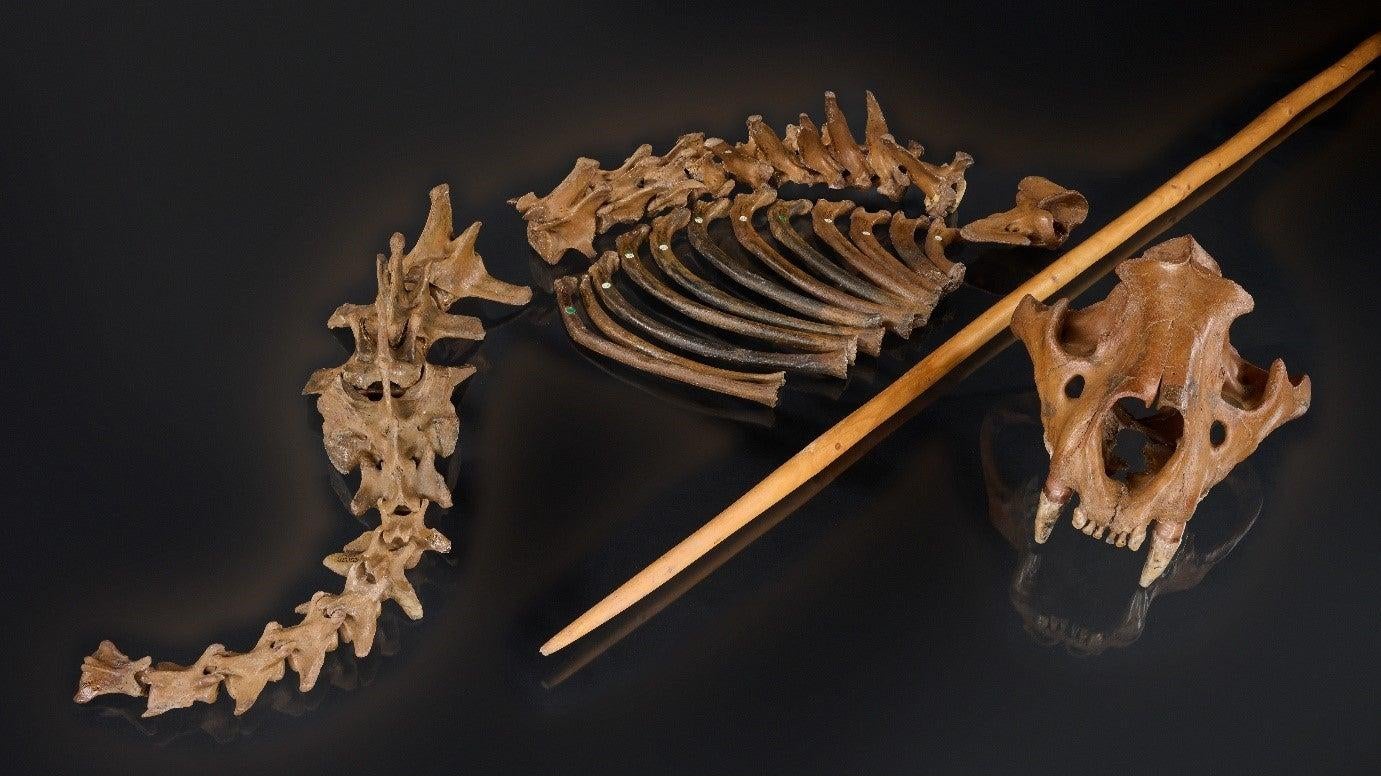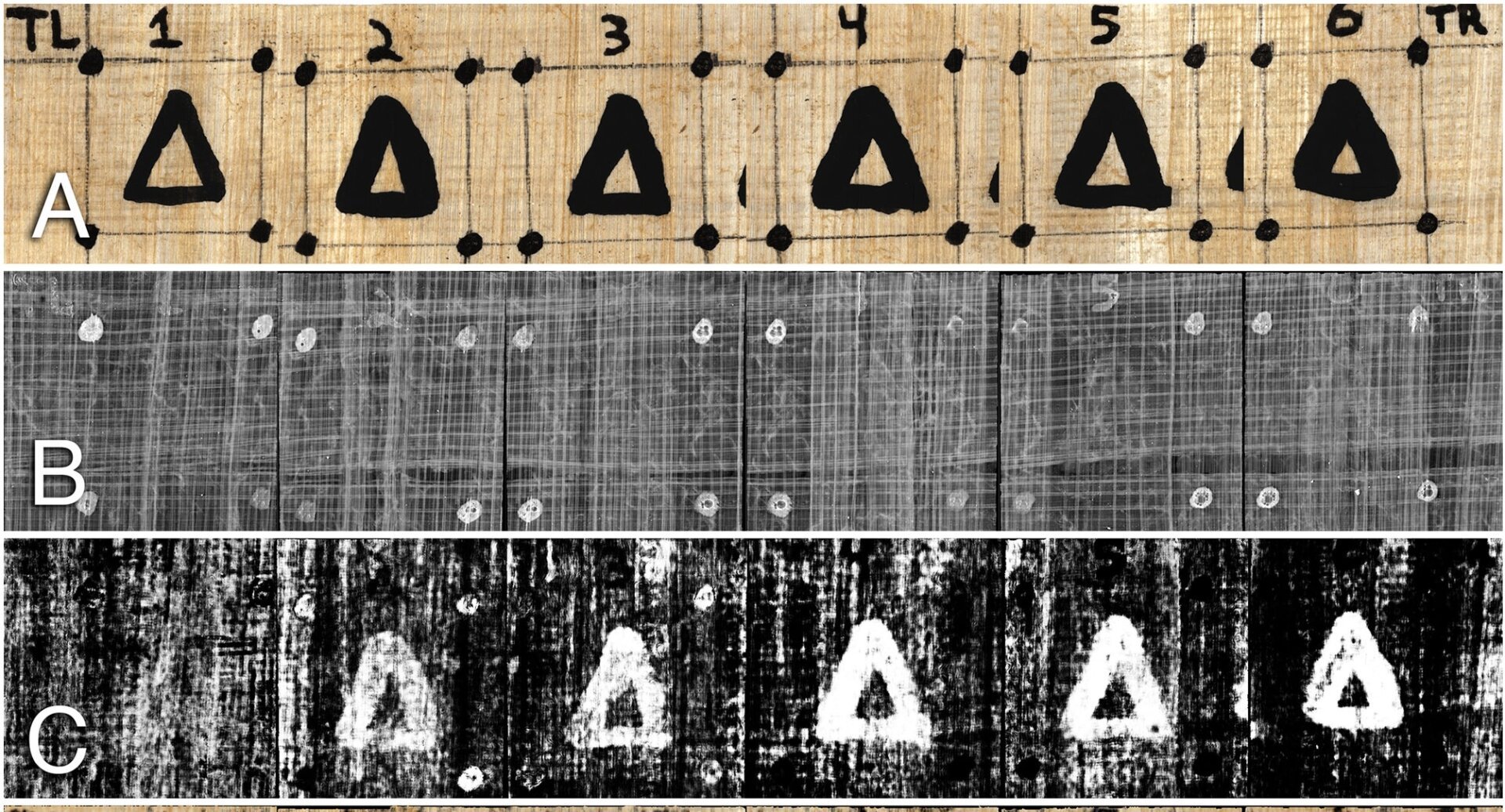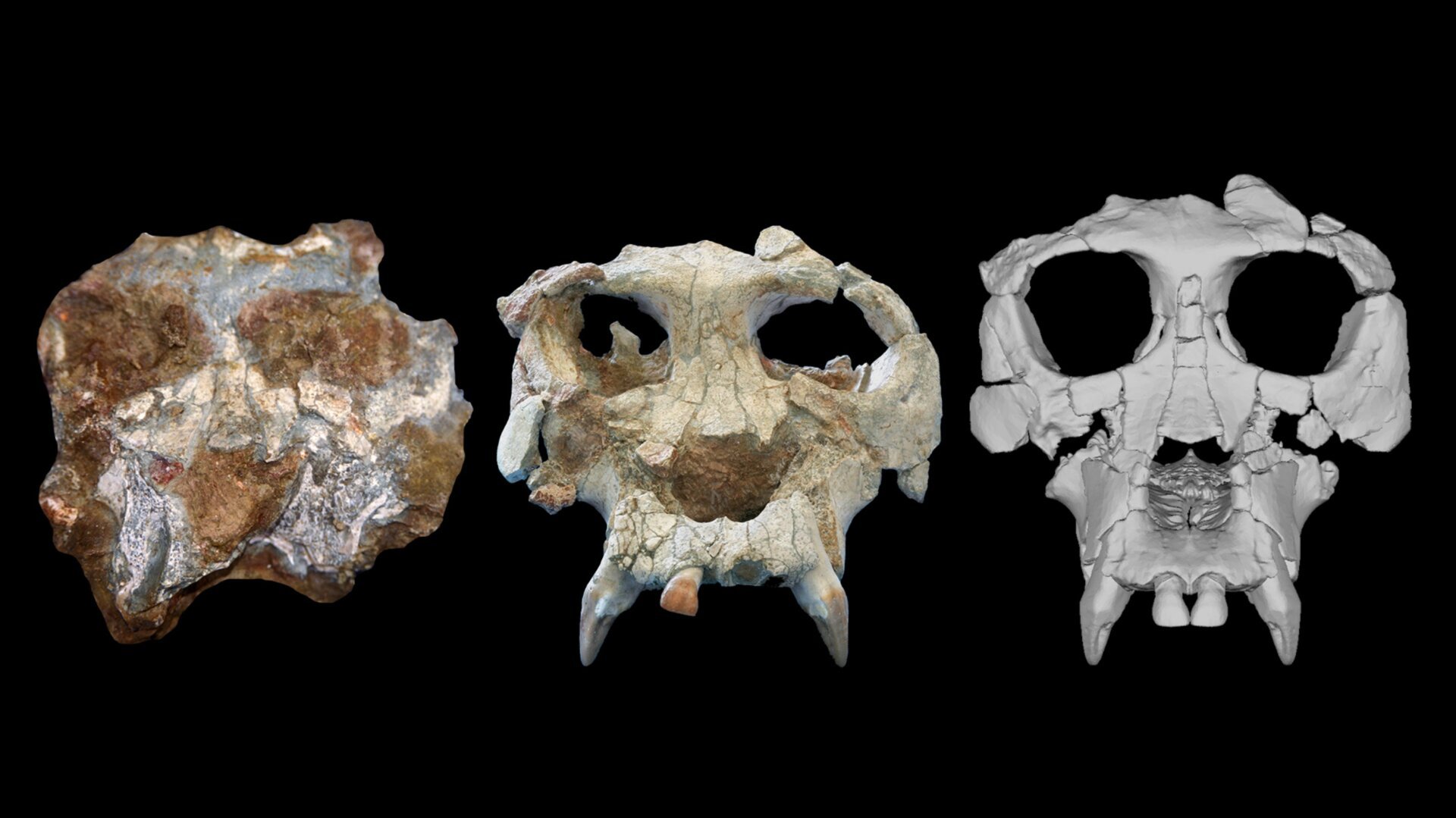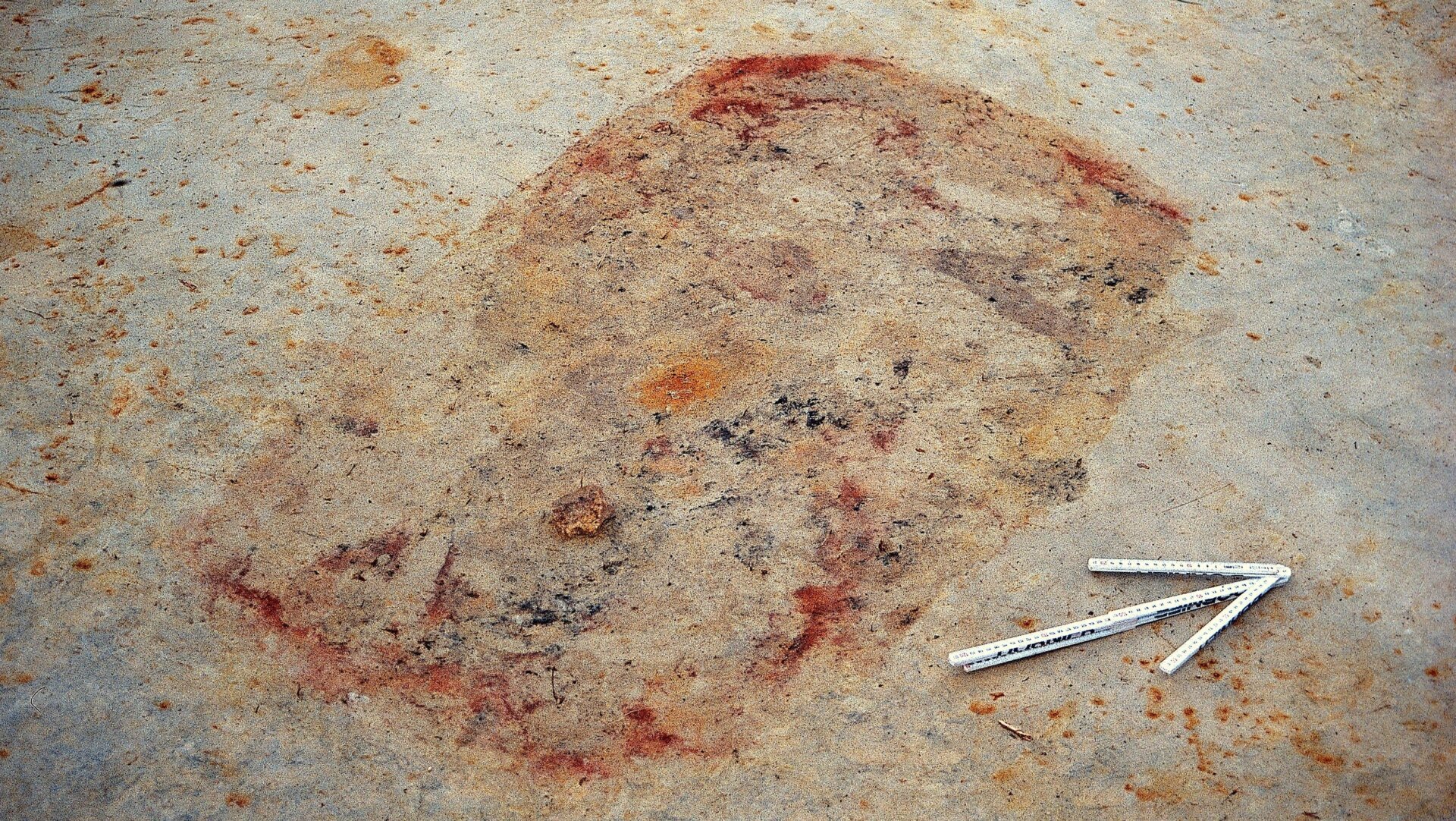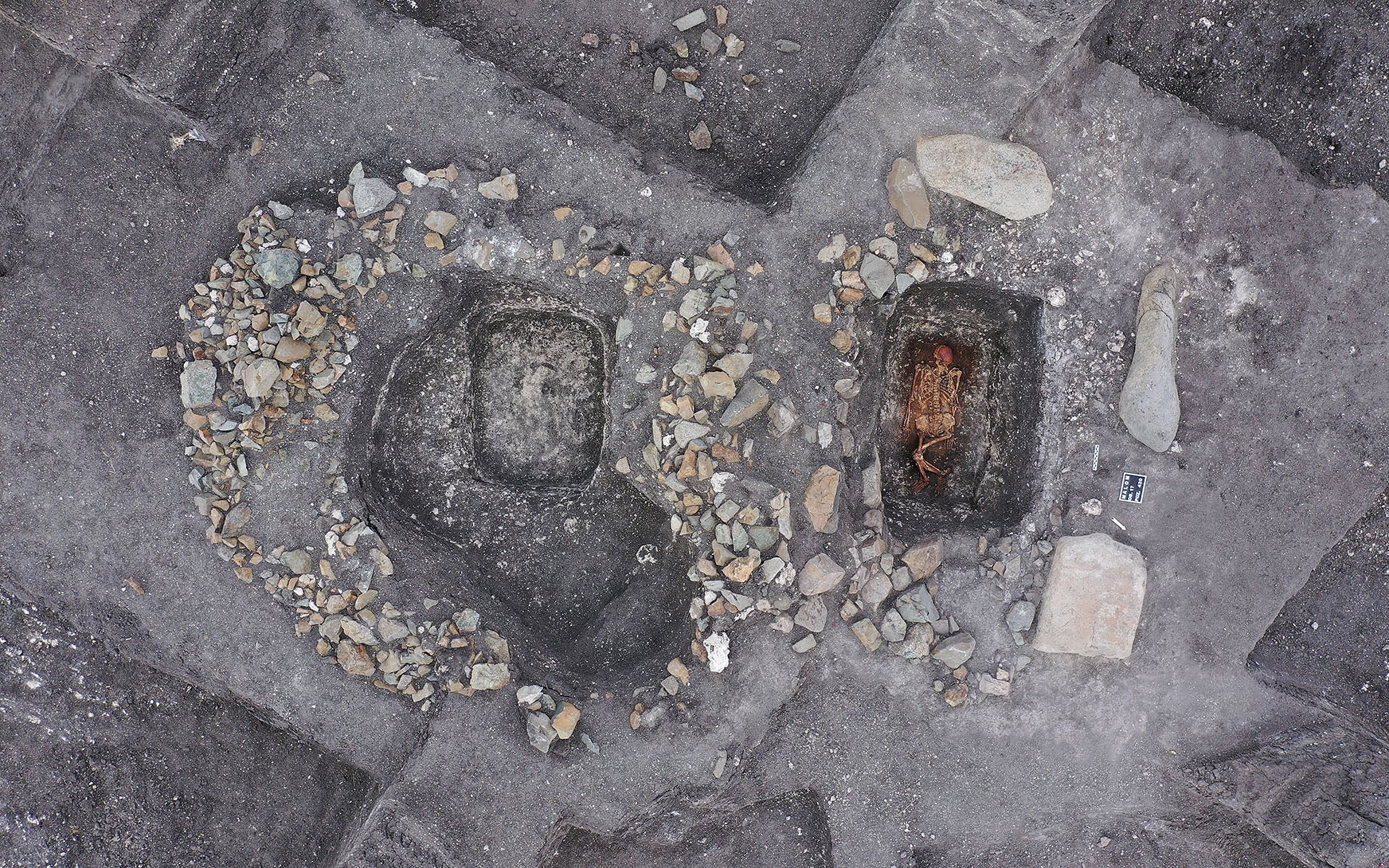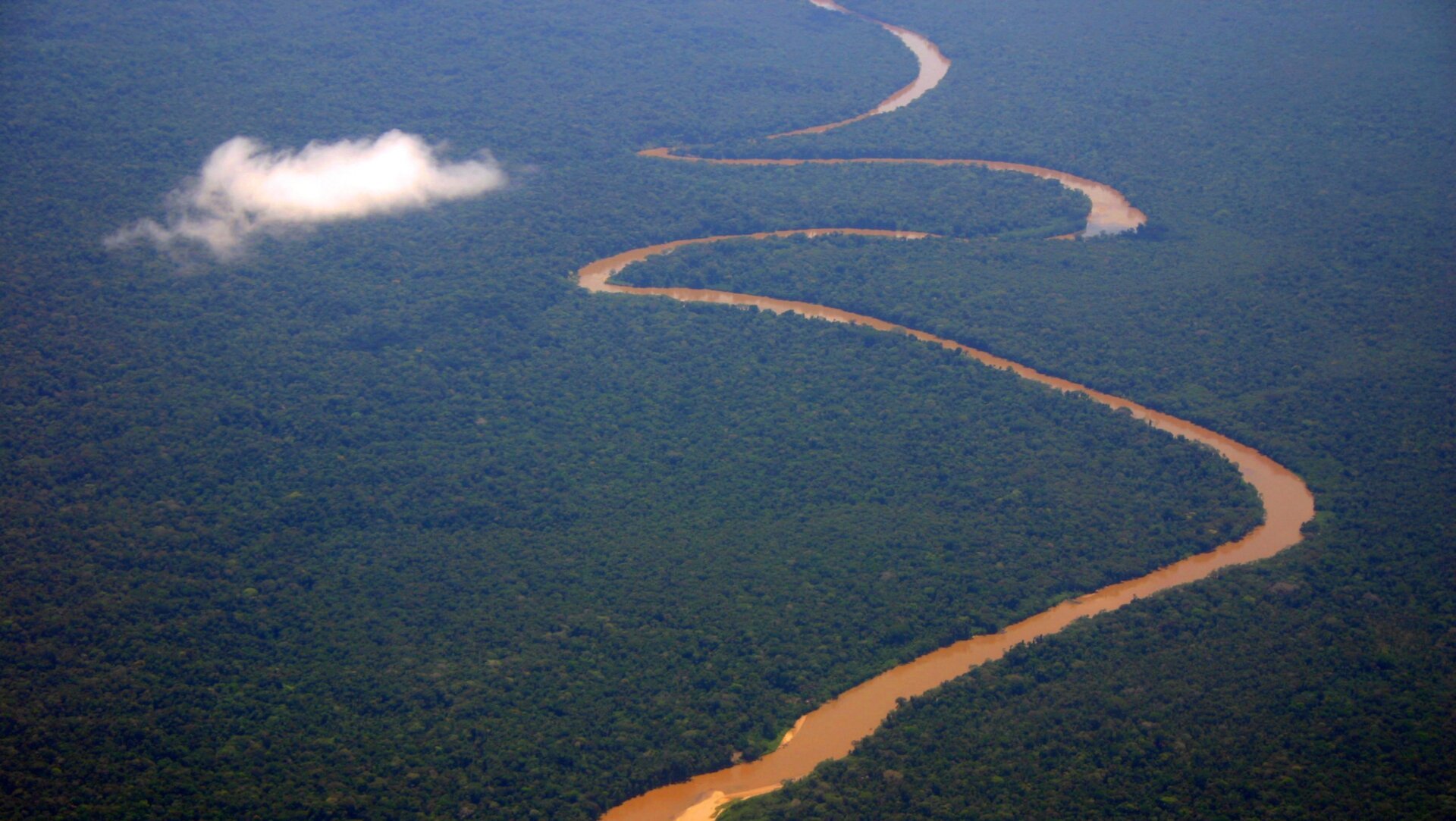The devastating eruption of Mount Vesuvius nearly 2,000 years ago entombed the Roman city of Pompeii, leaving behind a haunting snapshot of daily life frozen in time. A recent study using portable X-ray fluorescence (pXRF) on the remains of six Pompeii victims suggests that asphyxiation, caused by the volcano’s pyroclastic flows, was the likely cause of death.
Analyzing the Remains: A Deeper Look into Pompeii’s Past
The research, published in PLoS ONE, focused on analyzing the elemental composition of the victims’ bones and the plaster used to create casts of their final moments. These plaster casts, a groundbreaking technique developed by Italian archaeologist Giuseppe Fiorelli in the late 19th century, offer remarkable details of the victims’ features and clothing. The casts are formed by pouring plaster into the voids left by decomposed bodies within the hardened volcanic ash.
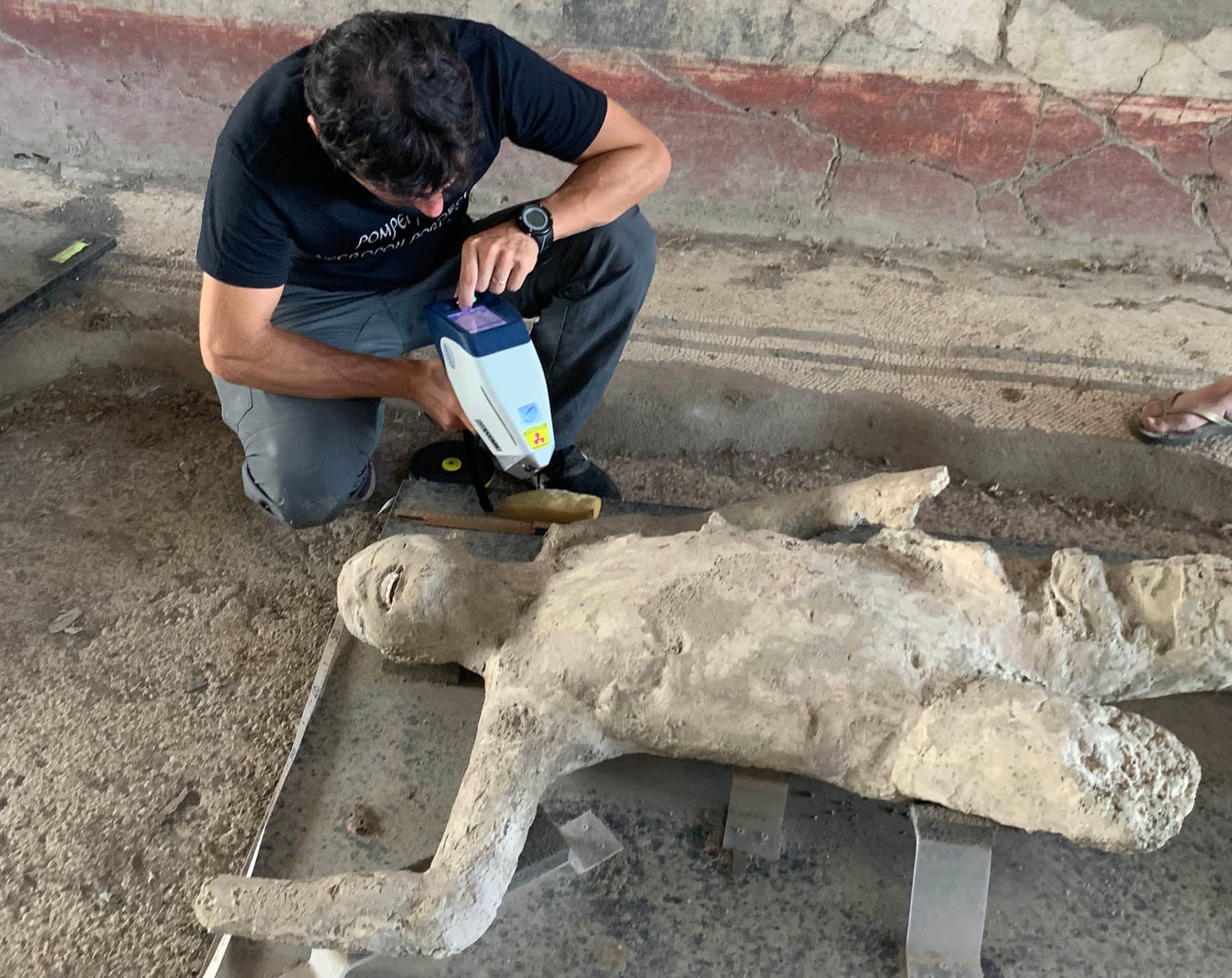 A member of the research team analyzes a Pompeii cast with pXRF.A researcher analyzes a Pompeii victim cast using portable X-ray fluorescence.
A member of the research team analyzes a Pompeii cast with pXRF.A researcher analyzes a Pompeii victim cast using portable X-ray fluorescence.
Unraveling the Mystery of Death in Pompeii
The cause of death for Pompeii’s residents has been a subject of debate among scientists. Some theories have pointed to the intense heat of the pyroclastic flows, citing the discovery of vitrified brain tissue in a Herculaneum victim as evidence. Others have considered the impact of falling debris. This new research, however, provides strong support for asphyxiation as the primary cause of death for many.
The Role of Pyroclastic Flows
Pyroclastic flows, fast-moving currents of superheated gas, ash, and volcanic debris, engulfed Pompeii during the eruption. The study examined six casts from the Porta Nola area, where individuals were seemingly attempting to flee the city, navigating treacherous terrain covered in lapilli, small volcanic fragments. Evidence suggests at least one individual was using a branch as a walking stick.
Evidence of Asphyxiation
Crucially, the analyzed casts do not exhibit the characteristic “pugilistic pose” often associated with deaths caused by extreme heat. This pose, resembling a boxer’s stance, results from muscle contraction and dehydration due to high temperatures. The absence of this pose suggests that the victims were not exposed to extreme heat before death.
The researchers concluded that while the gas-ash mixture in the area may not have been extremely dense, it would have been unbreathable for more than a few minutes, leading to asphyxiation. While the victims likely perished from suffocation, the subsequent deposition of hot ash from the pyroclastic flows undoubtedly had a thermal impact on the bodies after death.
The Future of Pompeii Research
The use of pXRF offers a non-invasive way to analyze these fragile remains, providing valuable insights into the final moments of Pompeii’s inhabitants. The researchers hope to apply this technique to other casts and remains from Pompeii and the surrounding Vesuvian area, further enhancing our understanding of this historical tragedy. The study represents a significant step towards unraveling the mysteries surrounding the destruction of Pompeii and the fate of its people.
Conclusion: A Glimpse into the Past
This study provides further evidence that asphyxiation was a likely cause of death for many Pompeii victims, challenging previous theories. The use of pXRF analysis offers a promising avenue for future research, enabling a deeper understanding of this catastrophic event. The ongoing research continues to bring us closer to understanding the final moments of Pompeii’s inhabitants and the devastating impact of the Vesuvius eruption.



